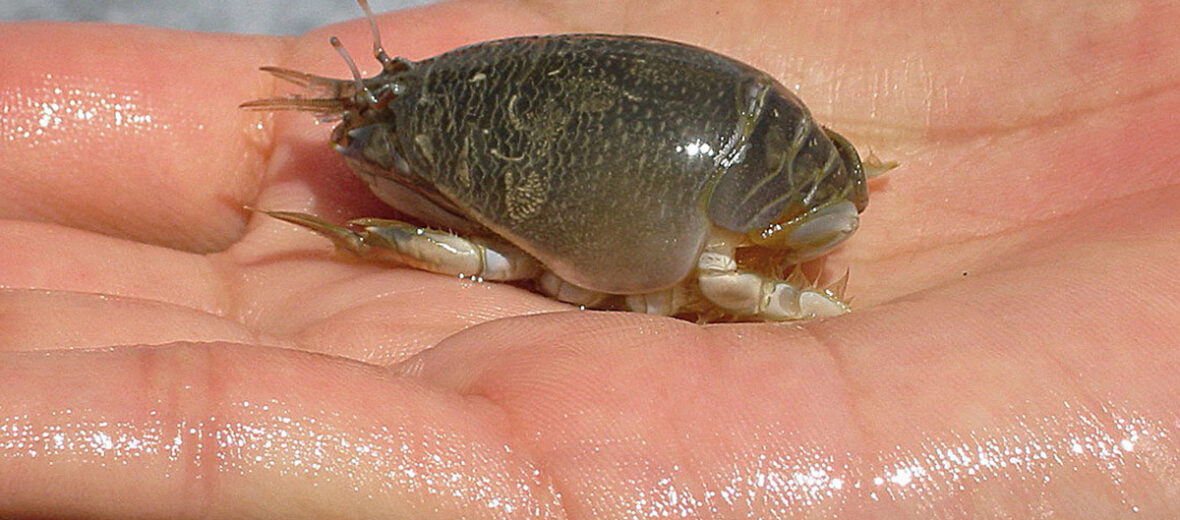
The Pacific mole crab, aka sand crab is found from Madelena Bay (Baja California) to Kodiak Island (Alaska). They have to deal with crashing waves, constantly shifting sand, tides coming in and out, seasonally changing beaches, and aquatic, land, and aerial based predators (including curious kiddos) on a daily basis. Due to this hostile environment, they are constantly buried in the sand.
First the Stats…
Scientific name: Emerita analoga
Weight: Up to 1 ounce
Length: Up to 2 inches
Lifespan: Up to 3 years
Now on to the Facts!
1.) Stone crabs, hermit crabs, and pelagic red crabs are their relatives.
2.) Unlike other crabs that can move in multiple directions, these little critters can only move backwards.
3.) They are so well adapted for burrowing that they can completely submerge themselves in the wet sand in a mere 1 – 7 seconds!
4.) Their first pair of antennae are used for respiration. The second pair is used for filter feeding on dinoflagellates and other phytoplankton.
5.) Drifting far off shore, the planktonic larvae develop for about 4 months. Here they will go through 8 – 11 larval stages before reaching adulthood.
But wait, there’s more on the Pacific mole crab!
6.) These diminutive critters move along the sandy beaches via the tide in the swash zone.
7.) Females can yield a single clutch of up to 45,000 eggs per month, which take about 30 days to develop.
Did you know…?
Sand crabs are known to carry parasites called spiny-headed worms. These parasites are passed onto their predators. Sea otters and birds can eat large quantities of crabs per day, and the ingested parasites can kill these animals.
8.) The main predators of the sand crab are water birds, fish, and shore birds.
Now a Short Pacific Mole Crab Video!
Also, check out the Critter Science YouTube channel. Videos added frequently!
Want to suggest a critter for me to write about? Let me know here.



